
Seedling




 |
Blazingstar, Dense
Liatris spicata
Closely related to Thick Blazingstar but can be identified by the rounded blunt bracts that are not bent outward. The stems are hairless and smooth reaching a height of 3'-5'. Dense Blazingstar enjoys mesic to wet prairies. |
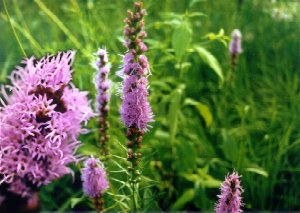 |




 |
Blazingstar, Dotted
Liatris punctata
A blazingstar from the western prairies that grows 12"-24" in height. The dense purple clusters form along a stalk which blooms July thru September and grows best in medium to dry, well-drained soils. It prefers full sun to light shade and is an attractive shorter perennial to any planting. |
|

Seedling


 |
Blazingstar, Dwarf
Liatris cylindracea
This native unbranched perennial grows to 2' tall with alternating flowerheads that are 1/2" wide. The overlapping bracts are smooth and flat. Often found in dry rocky or sandy prairies. Blooms midsummer to early fall in full sun and dry sandy soils. |
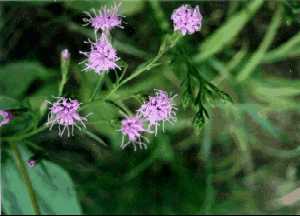 |





 |
Blazingstar, Meadow
Liatris ligulistylis
This plant is unsurpassed for attracting Monarch butterflies. These brilliant purple flowers appear in July and August and bloom for an extended period of time. The plant grows to a height of 36"- 60" and is the only blazingstar that is widely branched. It's an excellent food source for Goldfinches and does well in full sun to partial shade. Meadow Blazingstar does best in well drained medium to moist rich soils. |
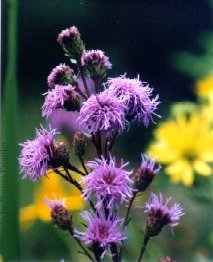 |





 |
Blazingstar, Rough
Liatris aspera
Rough Blazingstar has larger flowerheads (3/4"-1") than Thickspike but less numerous with cup-shaped bracts. The stem holds alternate leaves that are rough and narrow and lessen in size as they reach the top. It is commonly seen throughout the tallgrass region and open savannas growing 1'-2' tall. Blooms July thru September in dry areas. |
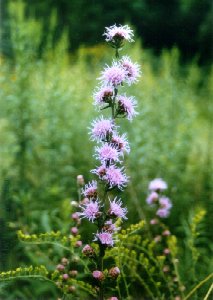 |





 |
Blazingstar, Thickspike
Liatris pycnostachya
A native drought resistant perennial, with hairy stems, that blooms midsummer to early fall. The flowerheads usually hold 5-10 individual flowers that begin at the top and progress downward with pointed bracts that are fuzzy and bent outward. Gayfeather, as it's sometimes referred to, has a bulbous corm as a root system from which fibrous roots branch out. |
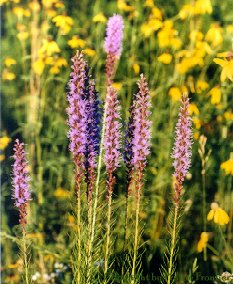 |
